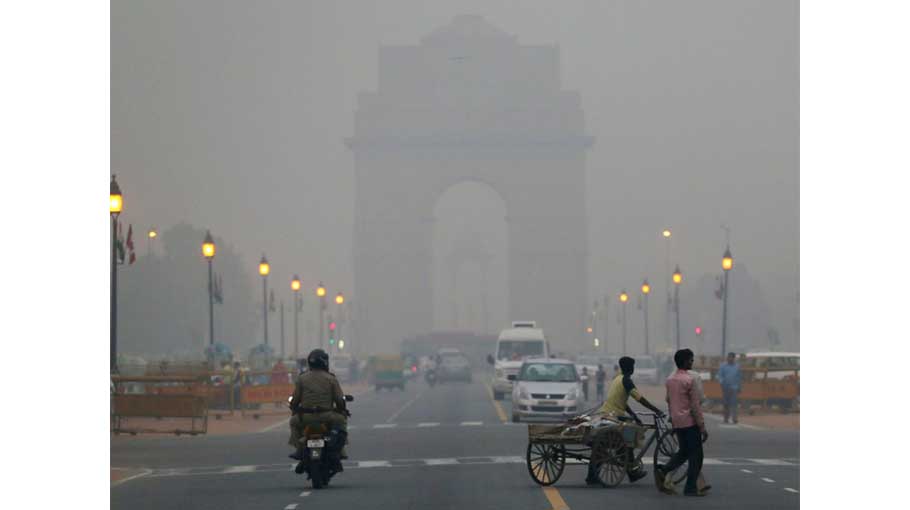Improving Delhi’s air quality: What can be done

Tn its World Urbanization Prospects of 2018 report, the Department of Economic and Social Affairs of the United Nations, forecasting on global population dynamics, predicted that Delhi was heading to becoming the world’s largest conurbation. By 2030, an estimated 39 million people will live in what is known as the Nation Capital Region (NCR).
This is hardly surprising. India is sure to be, if not already so, the most populous country in the world, overtaking China. Delhi, its current capital, has been an important city, the centre of major empires, for a very long time. According to UN estimates, it now is home to close to 30 million people, having crossed the 20 million mark over a decade ago.
But this landlocked megacity has a major problem. Its air quality is appalling. Especially in the winter months, when farmers in neighbouring states, take to stubble burning. Add to this the endemic vehicular pollution, smoke from the thermal power plants that supply much of the city’s electricity, plus fumes from brick kilns and other employment-generating industries in the region.
Read more: Four health ministry employees suspended
Primary man-made causes
These are some of the primary man-made causes. But Delhi also suffers from what some have called a “meteorological misfortune”. During its winter months, starting in October and right through February of the following year, winds are practically stagnant.
The bad air, which might otherwise be literally blown away, hangs over the city like a dense and depressing pall. Sometimes rains or gusts clear it away, but it usually returns. The days are short and dreary, the nights long and cold.
To add to all these, Delhi is a dusty city. Right at the edge of the advancing deserts of Rajasthan, Delhi has brittle and thin soil, liable to go up into the air rather than settling down. Most homes need to be dusted on a bi-weekly if not daily basis, lest grime accumulate over all clean and polished surfaces.
In the winter months, the dust binds with the pollutants, smoke from burning biomass, and moisture in the atmosphere to form what is known as smog. A combination of smoke and fog, as the word’s origin itself indicates.
A lot of time, energy, money, and public attention have been devoted to Delhi’s bad air. Year after year, the same concerns are raised, the same drastic measures proposed.
These include shutting down schools, declaring lockdowns, banning older vehicles, shifting to clearer gas-powered or electric buses and cars, stopping the farmers from burning the leftover stubble after the harvest season, closing the thermal power plants, suspending construction and other activities on especially bad days, and so on.
Read more: Creating a stable and poverty-free Bangladesh
Finding solutions
There are both Delhi state and central government authorities and agencies, such as Delhi Pollution Control Committee of the National Capital Territory and the Central Pollution Control Board of the Ministry of Environment, Forests, and Climate Change of the Government of India, whose responsibility it is to check this problem and to find solutions to it. But we are still way behind schedule.
Each year, an estimated several hundreds of thousands of Delhi residents, including children, suffer from acute respiratory stress and illness because of poor air quality. Many deaths are also related to polluted or unbreathable air.
The daily sermons and alarms sounded in the national and international media, whether in newspapers or on television, only adds to the increasing distress, even panic. There is a sense of helplessness and despair over the magnitude of the problem. No wonder the Supreme Court of India, has seen it fit to intervene in the matter.
During an ongoing hearing on this subject, a bench headed by Chief Justice NV Ramana, Justice DY Chandrachud, and Justice Surya Kant, ordered the central government to take emergency measures.Citing reports that the air quality is already “severe” and likely to worsen, the learnt judges wondered, “Tell us how we can reduce AQI from 500 at least by 200 points. Take some urgent measures. Can you think of two days lockdown or something? How can people live? We will look at a long-term solution later.”
Looking beyond politics
The honourable judges are, no doubt, right in saying, “You have to look at this issue beyond politics and government. Something must happen so that in two to three days we feel better.” But feeling better in the short-term is far from enough.
It is the permanent and lasting solutions which will matter if Delhi has to remain a sustainable city in the decade ahead. What will not help, as the learnt judges said, is the endless political blame-game either.
Estimates and reporting agencies vary, but there is a near-consensus that India hosts the most polluted cities in the world. According to the “World Air Quality Report, 2020” of IQAir, a Swiss air quality technology company, 22 of the worlds 30 most polluted cities in the world are in India. The Lancet estimates that over a 1 million die in India due air-pollution and related illnesses. This is only marginally less than the 1.25 million deaths in China.
But the good news is that air pollution can be reversed. China has done it, with Beijing being a shining example. Delhi, too, as per IQAir, has improved its air quality by 15% during 2019-2020, part of it possibly because of the Covid19 pandemic. Other cities and countries around the world have also managed to reduce their levels of pollution. Why not Delhi?
Makarand R. Paranjape is a Professor of English at the Jawaharlal Nehru University.
Views are personal.
Source: Gulf News




